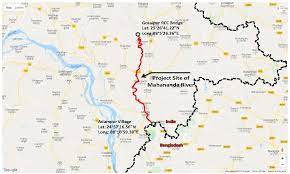The Mahananda River is a major river in Eastern India that flows through the states of West Bengal and Bihar. In this article, we will explore the significance of the Mahananda River, its characteristics, and the impact it has on the people and environment of the regions it flows through.

The Mahananda River originates in the Himalayas and flows through the Darjeeling hills of West Bengal before entering Bihar and joining the Ganges River. The river is approximately 360 kilometers long and is known for its scenic beauty and rich biodiversity. The river basin covers an area of about 16,000 square kilometers and supports a wide range of flora and fauna.
The Mahananda River is significant for the regions it flows through, as it provides water for irrigation, power generation, and transportation. The river is also an essential habitat for many aquatic species, including the Gangetic dolphin and various species of fish. The river and its surrounding forests are also home to many species of birds, reptiles, and mammals.
In recent years, the Mahananda River has faced several challenges, including pollution, habitat destruction, and climate change. The discharge of untreated industrial and domestic waste into the river has led to water quality degradation, affecting the river’s biodiversity and the health of the people who depend on it. Deforestation and agricultural activities in the river basin have also led to soil erosion and sedimentation, affecting the river’s water quality and flow.
To mitigate the impact of these challenges, the government of India and various NGOs have initiated several measures. The construction of wastewater treatment plants and the promotion of sustainable agricultural practices have helped in reducing pollution and soil erosion. The government has also declared several stretches of the river as protected areas and has launched conservation programs to protect the river’s biodiversity.
In conclusion, the Mahananda River is an important river in Eastern India, and its significance goes beyond its utility for human needs. The river’s rich biodiversity and scenic beauty make it an essential part of the region’s cultural heritage. It is essential to manage the river’s water resources effectively, protect its biodiversity, and take steps to reduce pollution and habitat destruction to ensure that the river continues to provide essential services to the people and environment of the regions it flows through.
Important Links